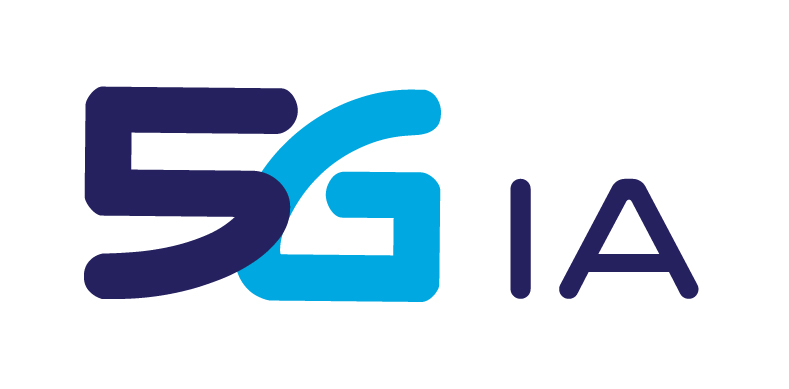

- About us
- Getting Involved
- Plans & Papers
- Events
- European 5G Activities
- Media & News
- Contact
Call for papers: IEEE Communication Magazine Feature Topic – Network Slicing
Network slicing has evolved from a simple network overlay concept to a fundamental feature of the emerging 5G systems enabling dynamic multi-service support, multi-tenancy and the integration means for vertical market players. Network slicing can drastically transform the networking perspective by abstracting, isolating and separating logical network behaviors from the underlying physical network resources. Network operators, can exploit network slicing for reducing capital and operations expenditures, allowing also programmability and innovation, necessary to enrich the offered services from simple communications services to a wider range of business services. The separation of different functions by abstractions (e.g. radio resources from packet processing) simplifies the integration challenges especially for applications supporting vertical industries beyond telecommunications.
Network slicing in 5G systems may be performed by abstracting different physical infrastructures into a logical network that contains shared resources, such as radio spectrum or dedicated core network equipment, and virtual network functions obtained by breaking down single physical equipment into multiple instances, which are isolated from each other. Virtualization of network functions allow to decouple network node functions from proprietary hardware appliances in order to create distinct building blocks that can be flexibly chained to create communication services.
The notion of resources in 5G network slicing includes network, compute and storage capacity resources; virtualized network functions; shared physical resources; and radio resources. Service designers can select the optimal control/user plane split, as well as compose and allocate virtualized network functions at particular locations inside the core or radio access network depending on the service requirements. The creation and management of network slicing is a challenging process that poses new problems in service instantiation and orchestration, resource allocation/sharing and assignment procedures as well as network virtualization technologies.
Existing open source, industry and standards developments have given shape to the initial perception of a 5G network slice, while further research activities aim to enhance such new evolving concept by exploring its full potential. The so-called 5G network slice fully supports a particular communication service exploiting the principles of software-defined networks and network function virtualization in order to fulfill the business and regulatory requirements. The achieved networking and service flexibility enables a radical change, beyond network sharing, enabling different mobile operators to offer tailored services and means for network programmability to OTT providers and or vertical market players.
CommMag guest editors
- Konstantinos Samdanis, NEC Europe, Germany, samdanis@neclab.eu
- Steven Wright, AT&T Services, US, sw3588@att.com
- Albert Banchs, UC3M, Spain, banchs@it.uc3m.es
- Antonio Capone, Politecnico di Milano, Italy, capone@elet.polimi.it
- Mehmet Ulema, Manhattan College, US, mehmet.ulema@manhattan.edu
- Kazuaki Obana, NTT Docomo, Japan, kazuaki.obana.uz@nttdocomo.com
Scope of Submissions
Original contributions are invited on the latest advancements on network slicing for 5G systems considering architecture, network management, orchestration and mechanisms that enable virtualization and multi-tenancy. The topics of interest within the scope of this issue include (but are not limited to) the following:
• Network Slicing architectures and deployment practices
• Network slicing and multi-tenancy support in service overlay networks
• Network function (de)composition and allocation considering “atomic” functions
• QoE support management mechanisms in network slices
• Multi-service and multi-connectivity network slicing
• Next generation of orchestration architectures combining SDN and NFV
• Network resource programmability and developments on the Northbound-APIs
• Mobile Edge Computing and service optimization
• Network slicing and backhaul /fronthaul mechanisms
• Network slicing for converged fixed-wireless 5G networks
Submissions
Articles should be tutorial in nature and written in a style comprehensible and accessible to readers outside the specialty of the article. Complete guidelines for prospective authors can be found at http://www.comsoc.org/commag/paper-submission-guidelines. The guest editors reserve the right to reject papers they unanimously deem to be either out of scope of this Feature Topic or otherwise extremely unlikely to be accepted after a peer review process.
It is important to note that IEEE Communications Magazine strongly limits mathematical content, and the number of figures and tables. Mathematical equations should not be used (in justified cases up to three simple equations are allowed). Article length (introduction through conclusions, excluding figures, tables and their captions) should not exceed 4,500 words. Figures and tables should be limited to a combined total of six (6). The number of archival references is limited to fifteen (15). Non-archival references (website URLs, web-posted papers and reports, unpublished/to be published/pending papers) should not be included in the “References” section. All articles must be submitted through the IEEE Manuscript Central site (http://mc.manuscriptcentral.com/commag-ieee) to the “May 2017 / 5G Network Slicing” category by the submission deadline according to the following schedule:
Important dates
- Manuscript Submission Deadline: September 15, 2016
- Decision Notification: December 15, 2016
- Final Manuscript Due Date: February 15, 2017
- Publication Date: May 2017







Share On